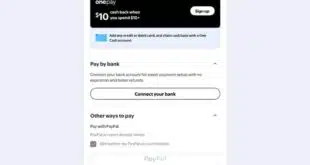When the Check Clearing Act for the 21st Century (Check 21) went into effect in October 2004, experts predicted it would be years before banks weaned themselves from the so-called image-replacement documents provided for in the law. These IRDs are paper printouts of check images that travel the last mile before receipt at the check writer's bank. Indeed, networks reported for months after going operational that the vast majority of their volume was flowing as IRDs. But now the largest image-exchange network in the country says not only is it trafficking more electronic images than IRDs, the ratio has almost exactly reversed in the past year. New York-based SVPCO, which is owned by many of the biggest banks in the country, reports about 80% of the 13.9 million items it handled in January (Digital Transactions News, Feb. 7) flowed through as images. A year ago, after the network went live, the same proportion of items flowed with print instructions for IRDs. “Going through our network, the volume has flip-flopped,” says Susan Long, senior vice president at The Clearing House Payments Co. LLC, of which SVPCO and its Image Payments Network are a part. Long says the tipping point came in October, when the network linked to a number of institutions whose commitment to image exchange meant that incremental volume growth was dominated by images. SVPCO's image exchange now links a dozen financial institutions in addition to the Federal Reserve and Electronic Data Systems Corp. She says the network predicted banks would move away from IRDs, which are less efficient than end-to-end settlement on images, but is somewhat surprised the movement is happening this quickly. “It probably happened a little sooner than we thought [it would],” she says. “It's a little surprising there aren't more IRDs.” Banks not equipped to receive check images can instead settle on IRDs. This allows banks of first deposit to send check images, avoiding physical transportation hassles and costs, but the conversion back into paper at the receiving end drains much of the cost efficiency out of image exchange. SVPCO, for example, charges higher fees for images destined to be turned into IRDs, sometimes called substitute checks. “We don't like IRDs,” says Long. She cautions that though the bulk of SVPCO's volume is now flowing as images, it is still possible that some of these images are still being printed as IRDs for delivery to receiving banks. In another development at the network, SVPCO reports the Fed, which has been receiving images on behalf of the banks it serves for the past year, has begun sending images as well. National City Bank last Friday became the first of the banks in the network to receive images from the Fed. More banks are expected to follow. This development, Long says, should drive volume further as it gives the large banks in the network the chance to receive check images from the mid-tier and regional institutions the Fed tends to support for check processing. “It's important because now we have end-to-end electronic processing,” she says. Now, she says, banks directly linked to SVPCO's network as well as the Fed's clients “will see the full benefits of image exchange.” She has not projected how much incremental volume the Fed's latest move will generate, but, she says, “It will definitely have an impact.”
Check Also
Branded Checkout Helps Buoy PayPal As It Eyes Crypto And BNPL
PayPal Holdings Inc. recorded a tepid 1% growth rate in revenue in the first quarter, …





